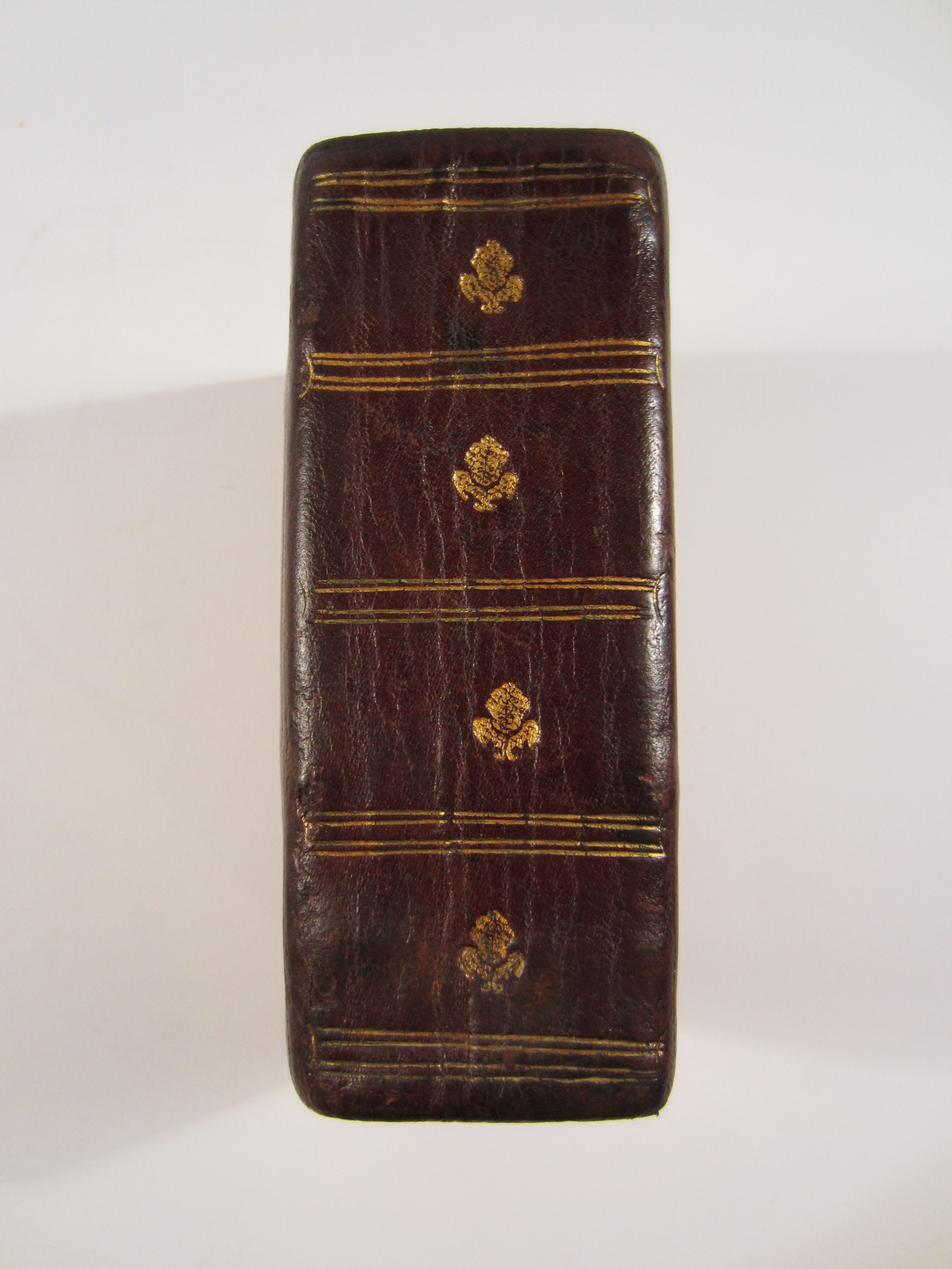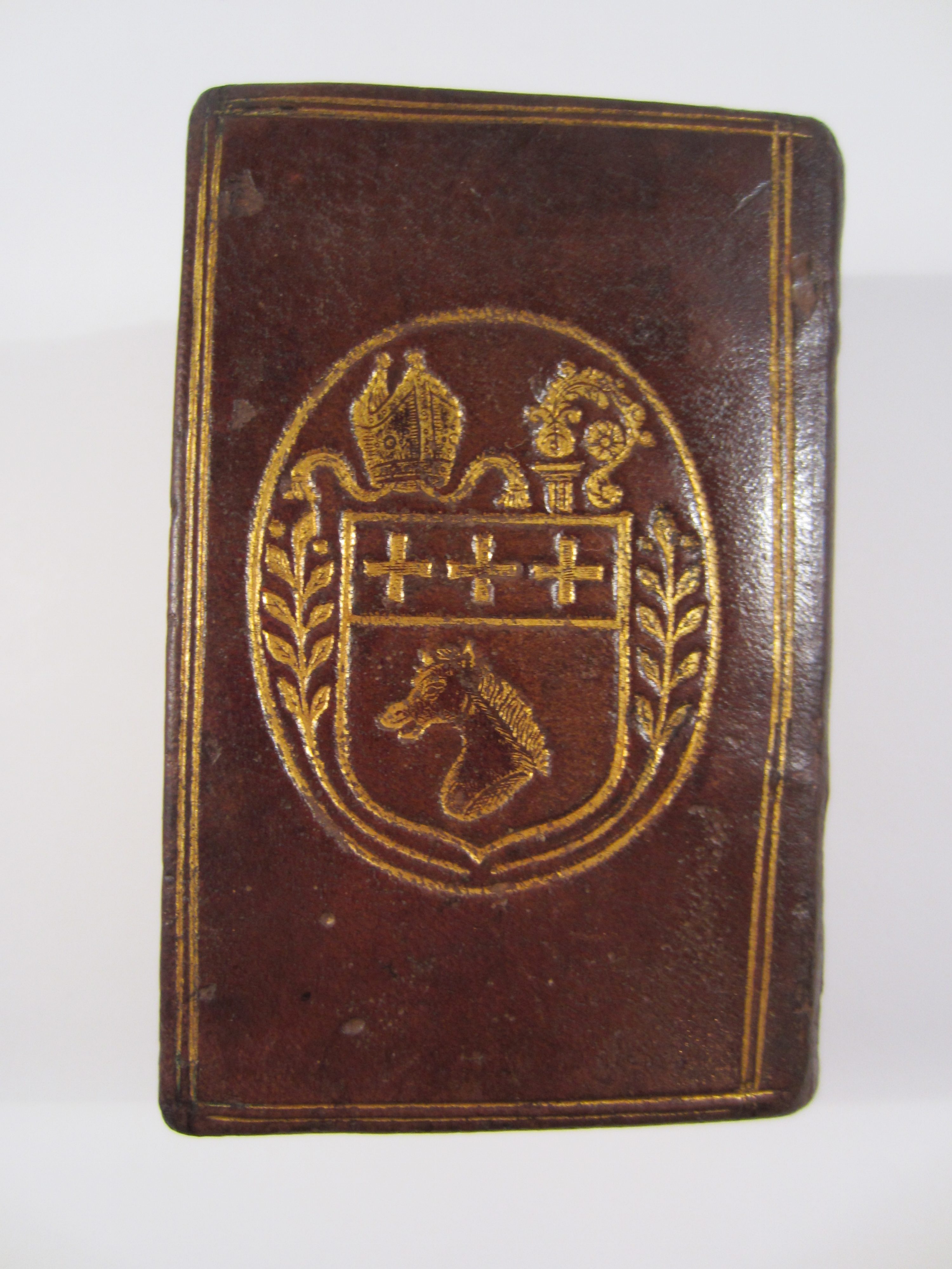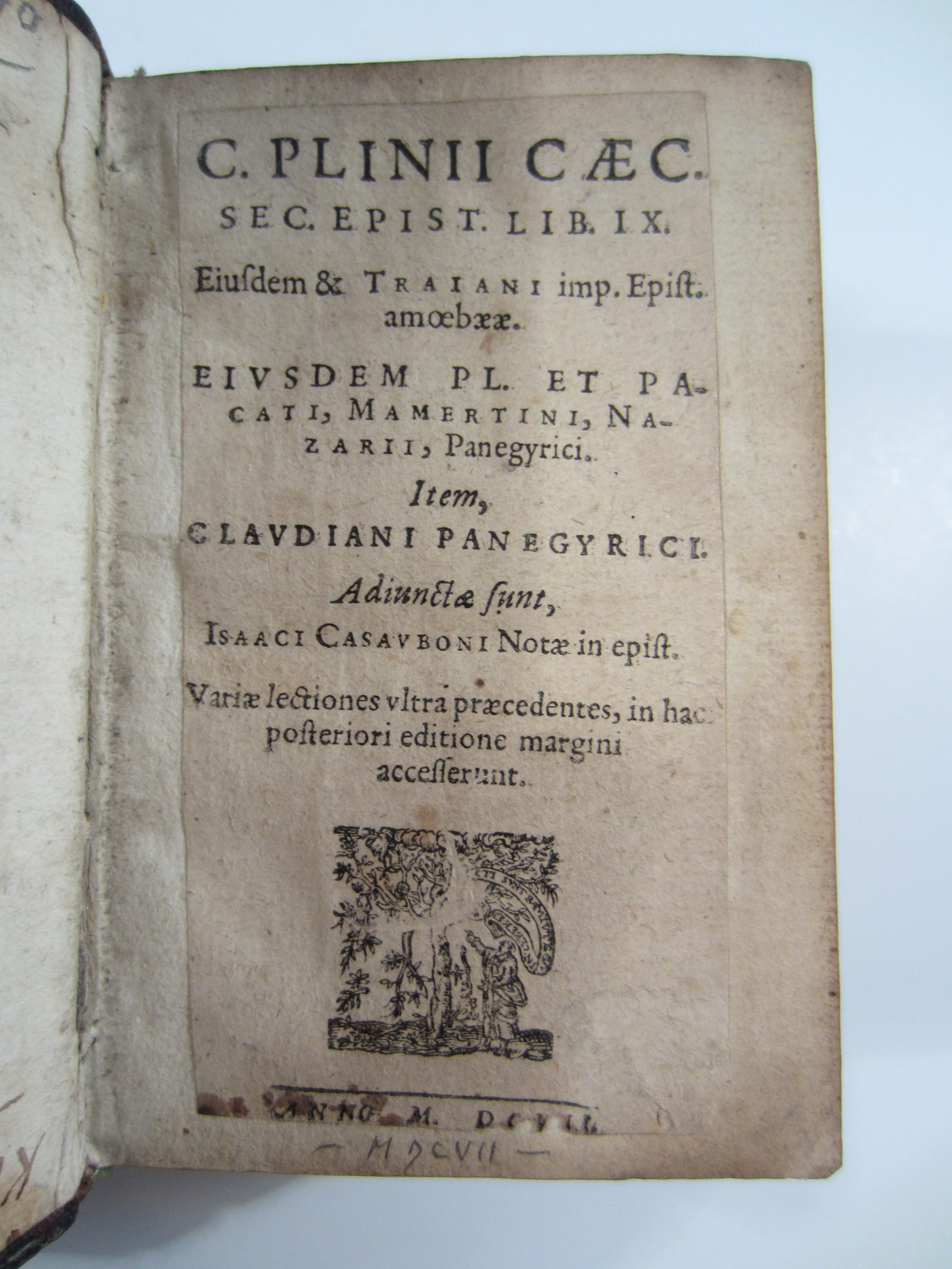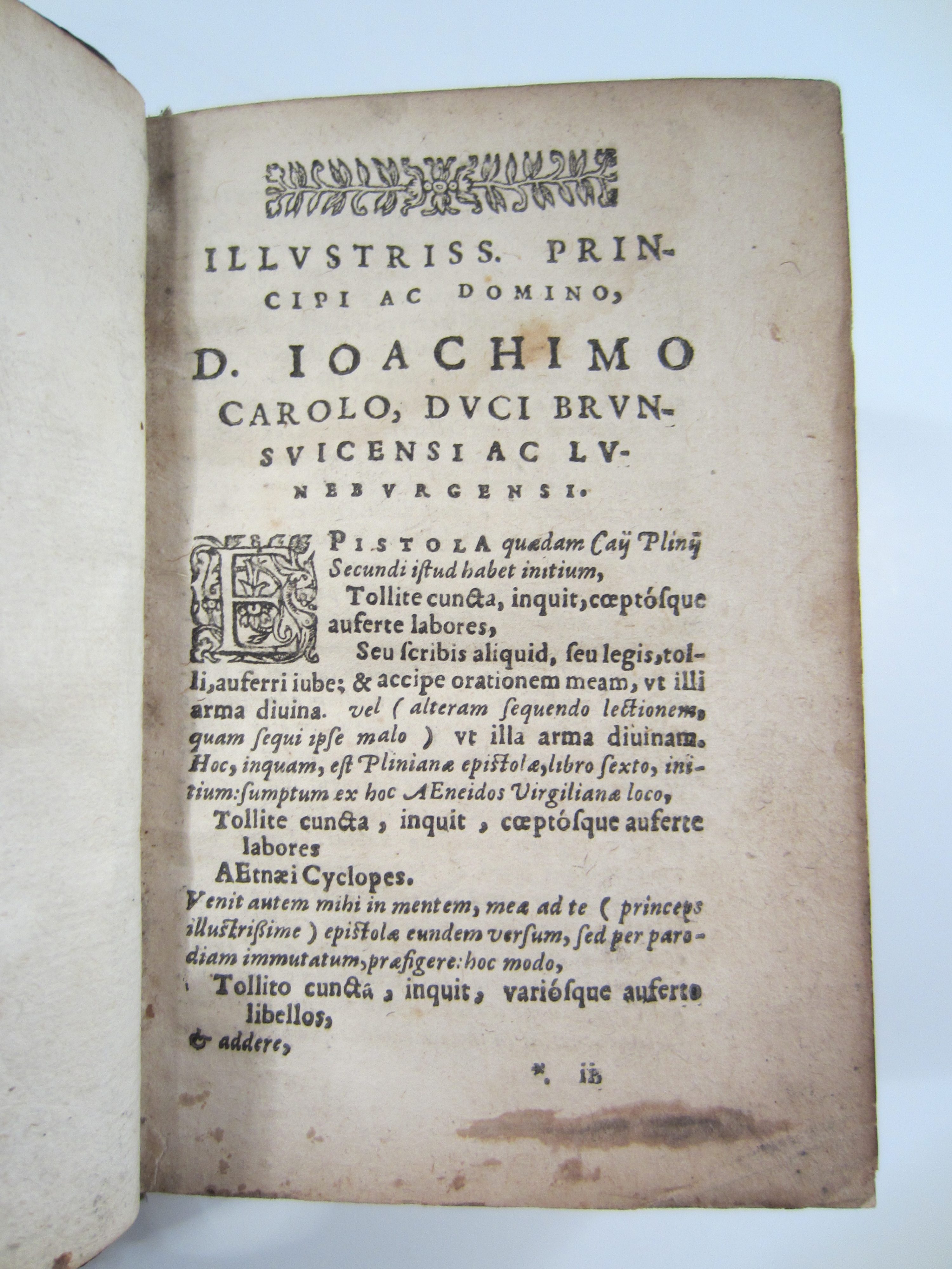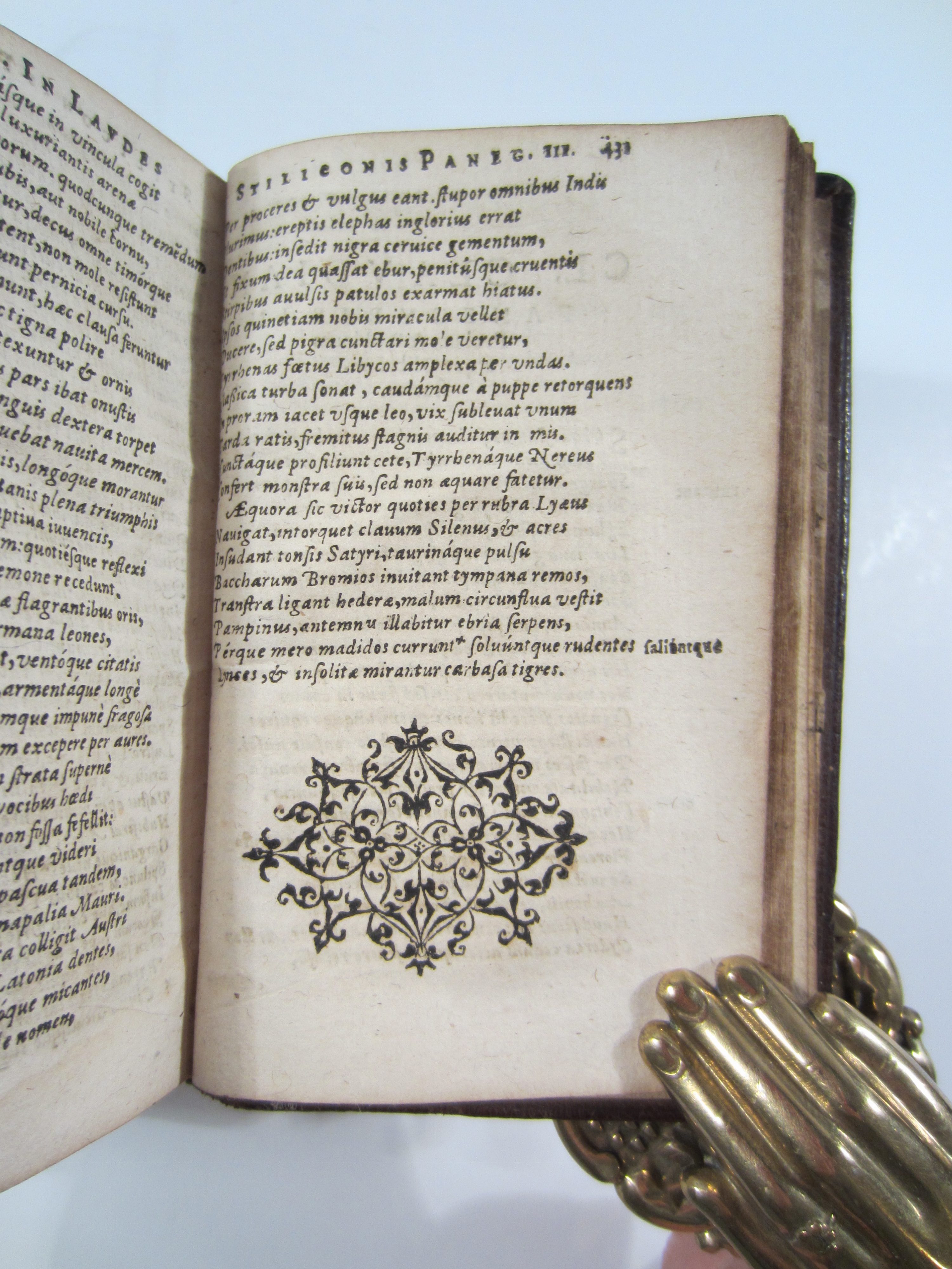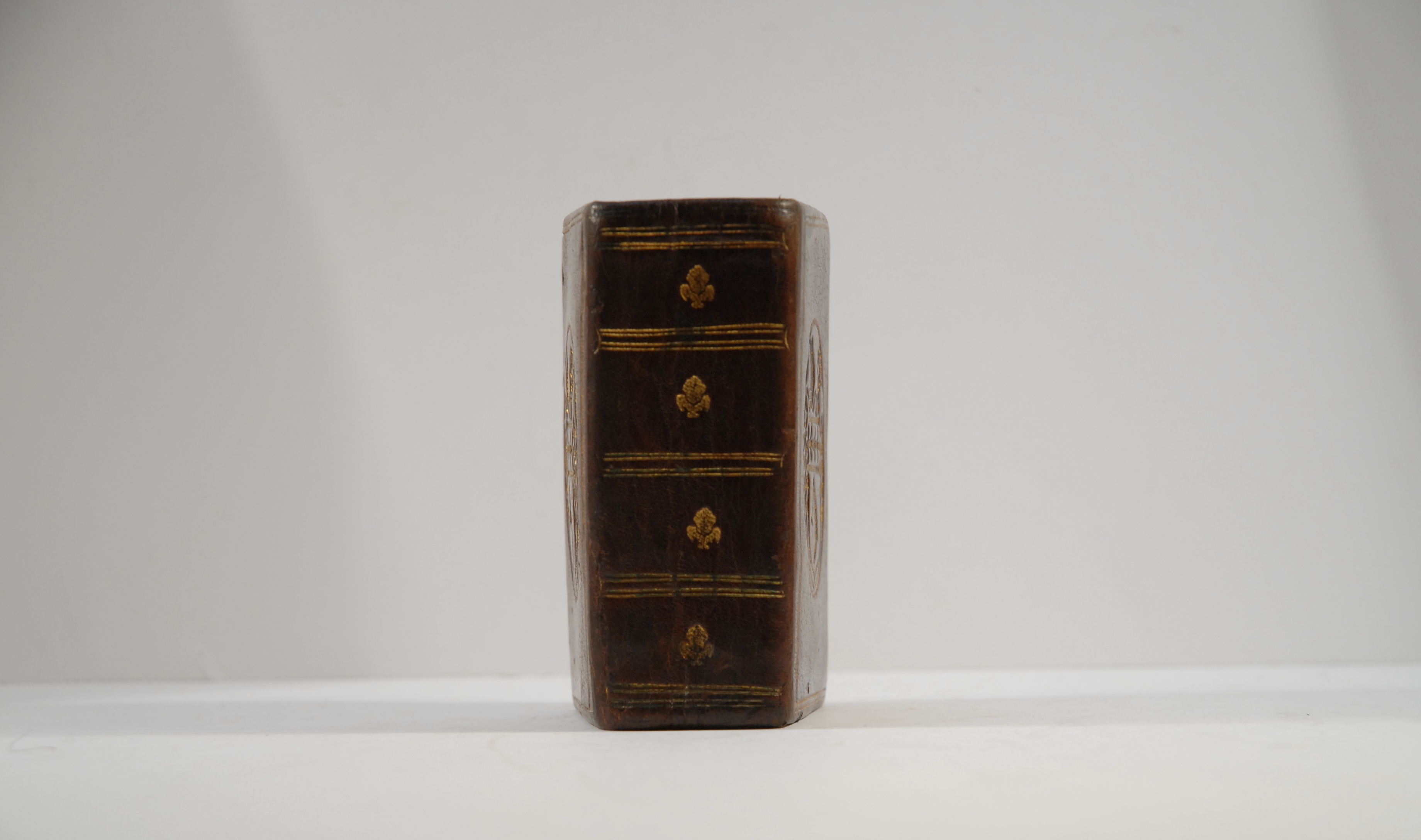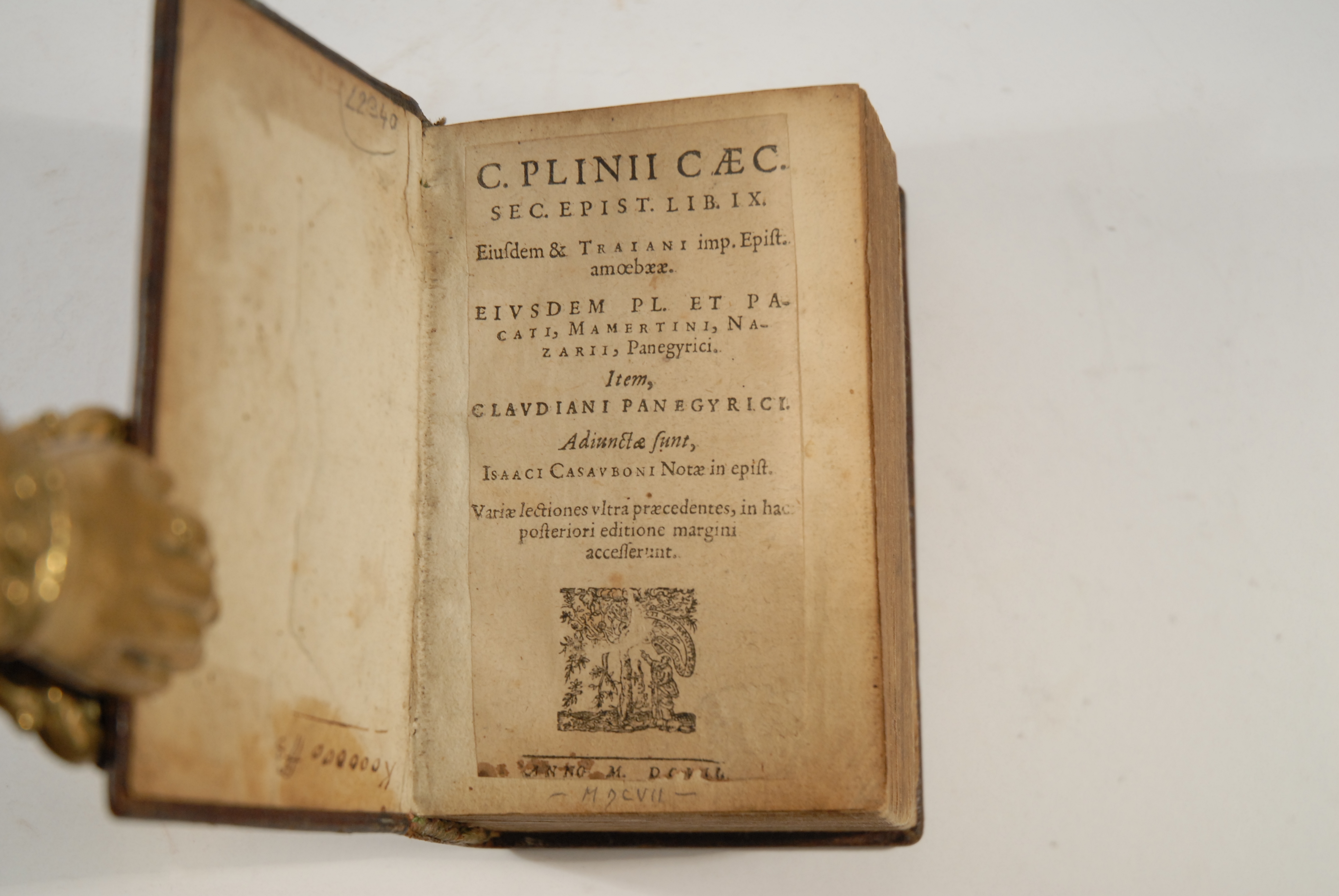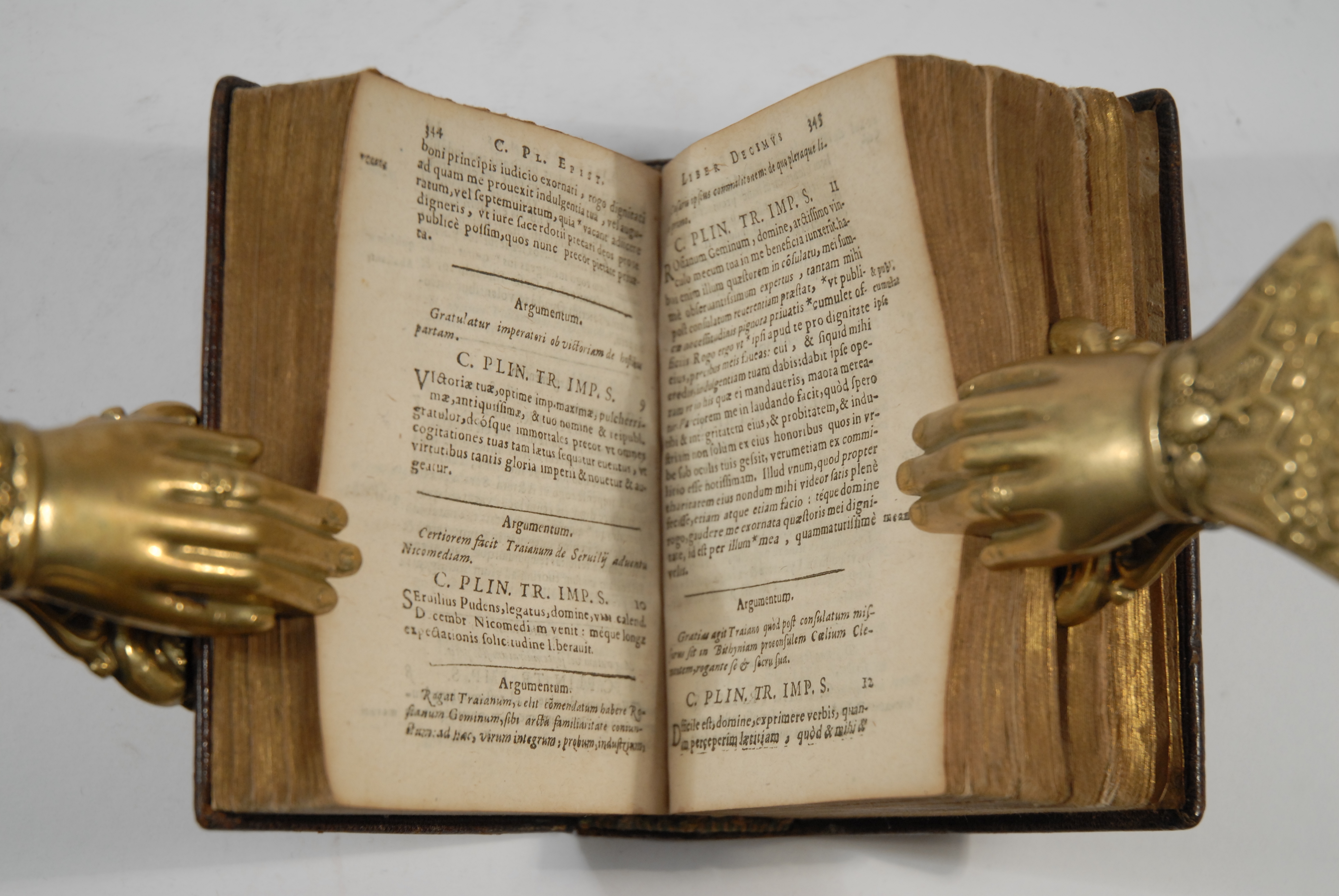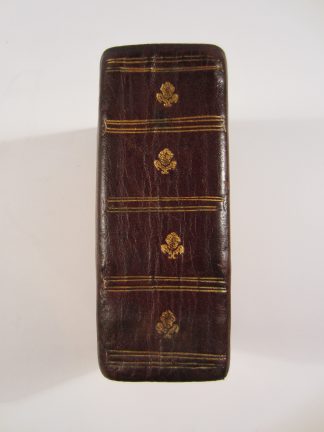PLINY, Caecilius Secundus, Gaius
ARMS OF THE SECOND BISHOP OF FRENCH NORTH AMERICA
Epist. Lib IX… Isaaci Casauboni notae
[Geneva, Paul Estienne], 1607£7,500.00
16mo. pp. 43, [xxi], 413, [iii], 448, [xxxii] [last two ll. blank]. Roman letter with some Italic. Estienne’s small woodcut device on title, woodcut initials, head and tail-pieces. Light age yellowing, title page trimmed in blank margins, mounted on fly at an early date, CCc1 with marginal tears, a little frayed, an old repair not touching text, quires AAa-BBb somewhat dog-eared, the odd marginal stain. A good copy, in excellent, if provincial, contemporary brown morocco, covers bordered with a double gilt rule, arms of the Bishop of Quebec, Saint-Vallier gilt at centres within gilt oval, spine double gilt ruled in compartments with small fleurons gilt at centres, all edges gilt.
A finely bound copy of this rare edition of the letters of Pliny edited by Issac Casaubon with tremendous early North American provenance; from the library of Jean-Baptiste de La Croix de Chevrières de Saint-Vallier, with his arms as Bishop of Quebec and Nouvelle France. He was the second Bishop of Québec and Nouvelle France, and served from 1685-1727, over forty years, at one of the most critical periods of the provinces history. The binding is probably contemporary to the printing so Saint-Vallier’s arms and the cover gilding were almost certainly added after 1688 when he was officially consecrated as Bishop, perhaps even during his time in North America, and most probably well before 1713 when he gave up the Bishop’s Palace and retreated to the Hopital General to live in a single room with few belongings – though including a few shelves of books.
“In 1684 Abbé Saint-Vallier was 31 and already his appointment to a see in France was generally anticipated. At that time his spiritual director, the Jesuit Father Le Valois.. spoke to him of the see of Quebec. The incumbent of the see, Bishop Laval, was thinking of resigning. He proposed to come to France to ask Louis XIV to choose a successor for him. Would Abbé Saint-Vallier agree to be this successor? An ambitious priest would certainly have refused. Created just ten years before, situated two or three months’ sailing time from France, burdened with a harsh climate, the diocese of Quebec in 1684 was perhaps the most wretched and difficult of all the dioceses in mission lands. It was immense, taking in the greater part of the territories that had already been explored in North America: Newfoundland, Acadia, the valley of the St Lawrence, the region of the Great Lakes, and even the whole of the valley of the Mississippi, which Cavelier de La Salle had just traversed down to its mouth. This diocese on a continental scale was on the other hand scarcely populated. And what diocesans! Nine out of ten were Indians, who were almost completely refractory to Christianity and who were on the brink of resuming the offensive against the French. In the midst of these Indians there was a handful of French settlers, barely more than 10,000. Abbé Saint-Vallier’s first sojourn in Canada lasted 18 months. Despite his lack of training the young priest astonished the clergy by his endurance and his zeal. First he visited Quebec, next all the parishes along the St Lawrence, and finally Montreal. Then, following the inland rivers and lakes, he went with two priests and a small escort to distant Acadia. He left in the spring of 1686 without even waiting for the break-up of the ice. They went from river to river, from lake to lake. Sometimes they had to break the ice to get the canoes through. At one time they thought they would die of starvation. Then came the summer, the unbearable mosquito bites, the humid heat. Everywhere they met Frenchmen or Indians, Abbé Saint-Vallier preached, catechized, rebuked, praised. He ate little, scarcely slept, and worked unceasingly. When he returned to Quebec in the autumn of 1686 he even thought of going inland as far as the Great Lakes.”. DCB. This small pocket size volume may well have accompanied the Bishop on his many travels in Quebec and Nouvelle France.
A very good edition, finely printed by Paul Estienne in this miniature format, of the Estienne text of the Younger Pliny’s Letters with the notes of Issac Casaubon. (Who was Paul Estienne’s brother in law.). Dibdin describes the various edns., first printed in 1591, as ‘elegant and valuable’. This particular edition seems to be one of the rarest, with worldcat locating two copies only, one at the BNF and one at Harvard. It is not mentioned in any of the usual bibliographies.
Not in Renouard. Dibdin II 330 (other editions). Graesse V 346, (other editions) Not in Brunet or in BM. STC. Fr. C17th. Arms not in Guigard.In stock


